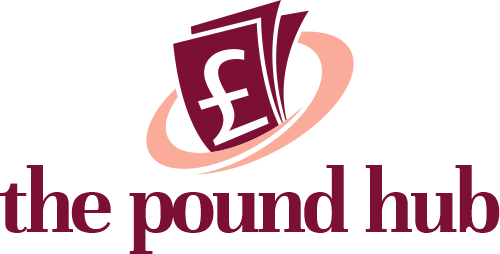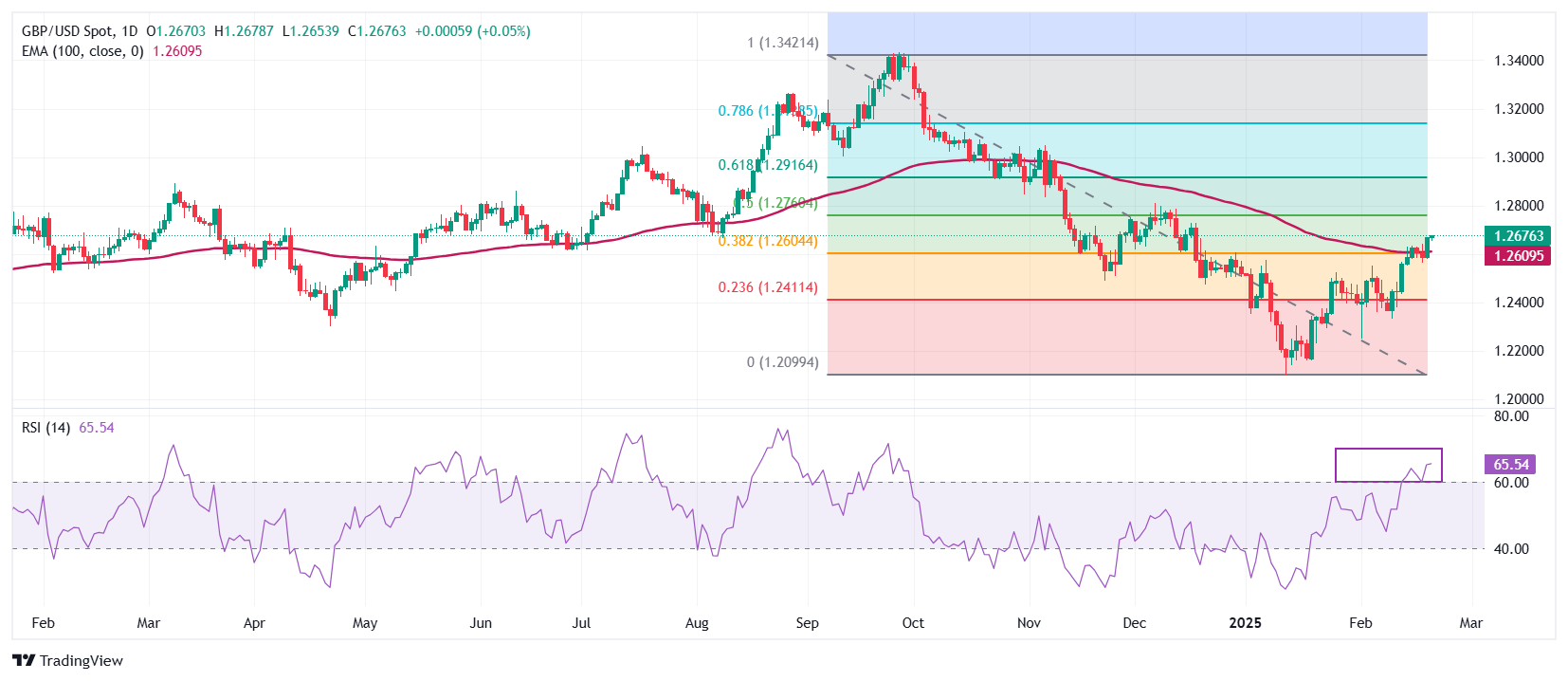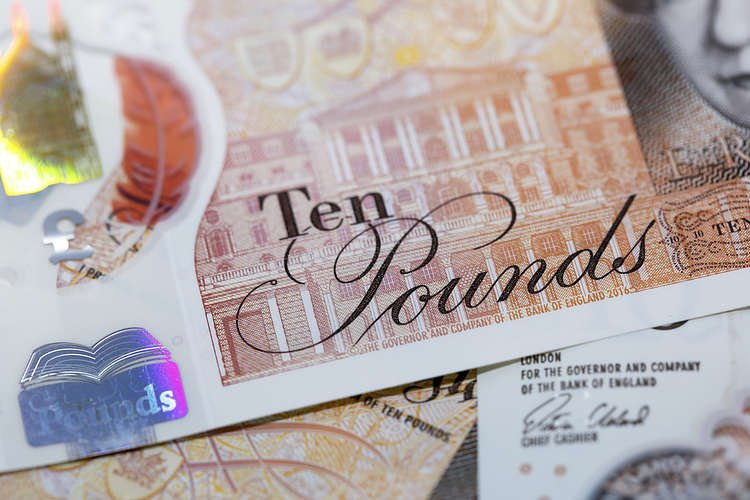- The Pound Sterling gains sharply against its major peers after the release of upbeat UK Retail Sales data for January.
- UK’s upbeat Retail Sales, hot inflation, and strong wage growth are expected to weigh heavily on BoE’s dovish bets.
- Investors await for the preliminary S&P Global UK/US PMI data for February.
The Pound Sterling (GBP) strengthens against its major peers on Friday after the release of robust United Kingdom (UK) Retail Sales data for January. The Office for National Statistics (ONS) reported that Retail Sales, a key measure of consumer spending, rose at a robust pace of 1.7% in the month after contracting by 0.6% in December, revised lower from -0.3%. Economists expected the consumer spending measure to have grown at a moderate pace of 0.3%.
Year-on-year Retail Sales rose by 1%, beating the estimate of 0.6%, but remained lower than the 2.8% growth seen in 12 months to December.
Upbeat Retail Sales data is expected to force traders to further pare their bets on the Bank of England (BoE) cutting interest rates again in the March meeting. The BoE’s dovish bets were already challenged by a hotter-than-expected Consumer Price Index (CPI) report for January and strong Average Earnings data in the three months ending December.
However, investors are unlikely to become increasingly optimistic about the British currency’s outlook as BoE Governor Andrew Bailey remains concerned over economic prospects this year. Earlier this week, Bailey warned that the economic growth is expected to remain sluggish.
In the monetary policy meeting earlier this month, the BoE halved its annual Gross Domestic Product (GDP) forecasts for the year to 0.75%.
Daily digest market movers: Pound Sterling gains further against US Dollar
- The Pound Sterling extends its upside to near 1.2680 against the US Dollar (USD) in European trading hours on Friday, the highest level seen in two months. The GBP/USD pair rose sharply on Thursday as the US Dollar weakened amid a risk-on market mood. The US Dollar Index (DXY), which tracks the Greenback’s value against six major currencies, is up 0.15% in the day at the press time but remains close to its Year-To-Date (YTD) low of around 106.30.
- The Greenback remains on the backfoot as its risk premium has diminished, with investors anticipating that United States (US) President Donald Trump’s tariff agenda won’t lead to a significant slowdown in the global economy.
- Till now, President Trump has imposed 25% tariffs on aluminum and steel and 10% on all imports from China. He has threatened to impose a 25% levy on cars, semiconductors, and pharmaceuticals and the introduction of reciprocal tariffs without any detail and timeline. Investors had anticipated that Trump would announce a slew of tariffs soon after returning to the White House in January, based on his comments in the election campaign, which has forced them to believe that Trump’s tariff policies are just a ‘tactic’ to have the upper hand while having negotiations with his allies.
- The US Dollar struggles to find ground despite Federal Reserve (Fed) officials have been guiding a restrictive monetary policy stance. On Thursday, Fed Governor Adriana Kugler said that central bank should keep borrowing rates “in place” for “some time”, noting the net effect of new economic policies is “highly uncertain” and will depend on the “specifics”.
- In Friday’s session, investors will focus on the preliminary S&P Global UK/US Purchasing Managers Index (PMI) data for February.
Technical Analysis: Pound Sterling refreshes two-month high slightly below 1.2700
The Pound Sterling posts a fresh two-month high against the US Dollar near 1.2680 on Friday. The GBP/USD strengthens after breaking above the 38.2% Fibonacci retracement from the end-September high to the mid-January low downtrend, which coincided with the 100-day Exponential Moving Average (EMA), around 1.2620.
The 14-day Relative Strength Index (RSI) holds above 60.00. The bullish momentum would fizzle out if the RSI (14) fails to sustain above that level.
Looking down, the February 11 low of 1.2333 will act as a key support zone for the pair. On the upside, the 50% Fibonacci retracement at 1.2767 will act as a key resistance zone.
Pound Sterling FAQs
The Pound Sterling (GBP) is the oldest currency in the world (886 AD) and the official currency of the United Kingdom. It is the fourth most traded unit for foreign exchange (FX) in the world, accounting for 12% of all transactions, averaging $630 billion a day, according to 2022 data. Its key trading pairs are GBP/USD, also known as ‘Cable’, which accounts for 11% of FX, GBP/JPY, or the ‘Dragon’ as it is known by traders (3%), and EUR/GBP (2%). The Pound Sterling is issued by the Bank of England (BoE).
The single most important factor influencing the value of the Pound Sterling is monetary policy decided by the Bank of England. The BoE bases its decisions on whether it has achieved its primary goal of “price stability” – a steady inflation rate of around 2%. Its primary tool for achieving this is the adjustment of interest rates. When inflation is too high, the BoE will try to rein it in by raising interest rates, making it more expensive for people and businesses to access credit. This is generally positive for GBP, as higher interest rates make the UK a more attractive place for global investors to park their money. When inflation falls too low it is a sign economic growth is slowing. In this scenario, the BoE will consider lowering interest rates to cheapen credit so businesses will borrow more to invest in growth-generating projects.
Data releases gauge the health of the economy and can impact the value of the Pound Sterling. Indicators such as GDP, Manufacturing and Services PMIs, and employment can all influence the direction of the GBP. A strong economy is good for Sterling. Not only does it attract more foreign investment but it may encourage the BoE to put up interest rates, which will directly strengthen GBP. Otherwise, if economic data is weak, the Pound Sterling is likely to fall.
Another significant data release for the Pound Sterling is the Trade Balance. This indicator measures the difference between what a country earns from its exports and what it spends on imports over a given period. If a country produces highly sought-after exports, its currency will benefit purely from the extra demand created from foreign buyers seeking to purchase these goods. Therefore, a positive net Trade Balance strengthens a currency and vice versa for a negative balance.








